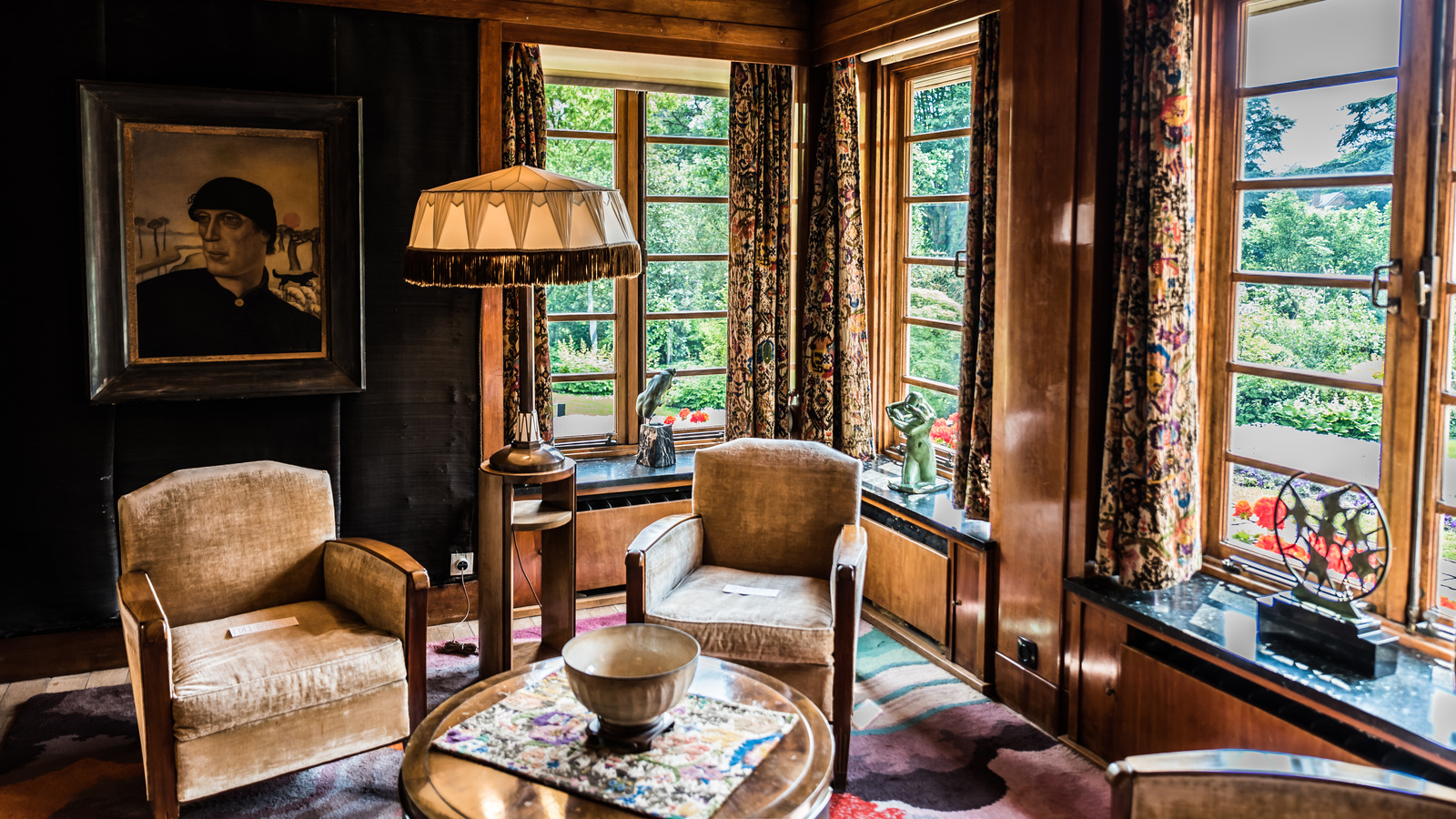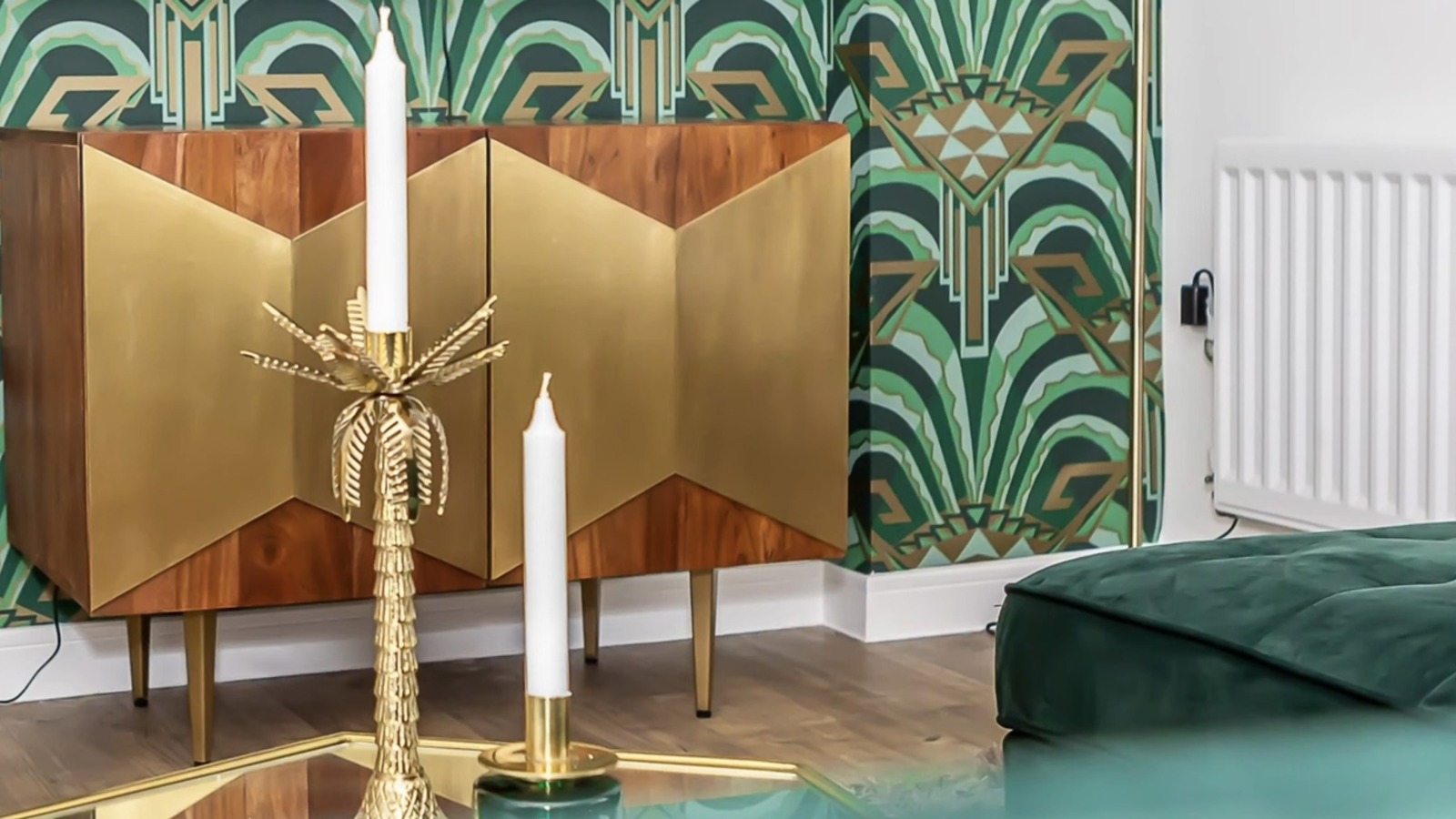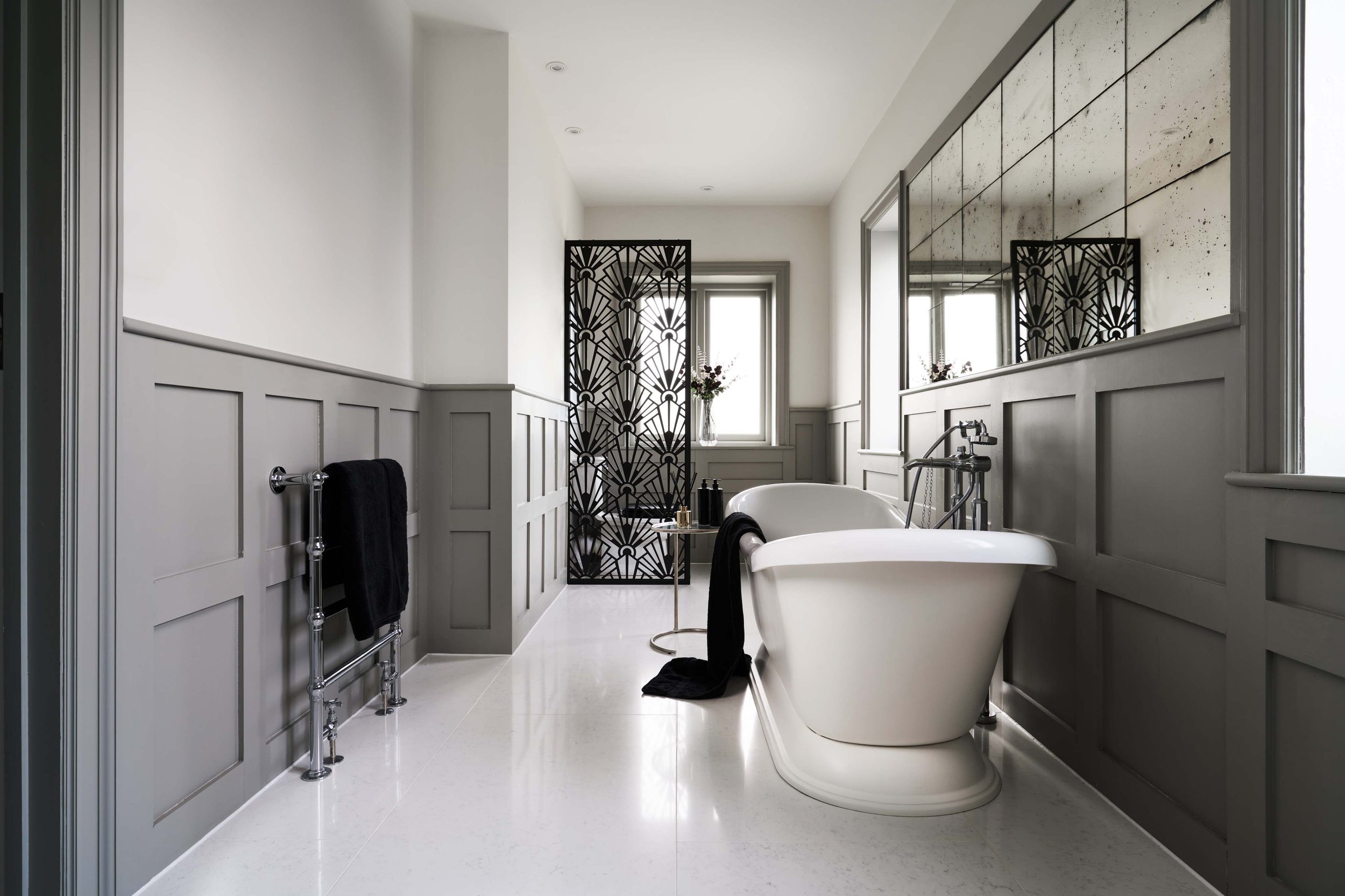Art Deco Design Principles and History: Art Deco Cocktail Bar Cabinet

Art Deco, a design movement that emerged in the 1920s and flourished throughout the 1930s, represents a captivating blend of modernism and traditional craftsmanship. It embodies a distinct aesthetic characterized by geometric patterns, bold colors, and luxurious materials, reflecting the optimism and extravagance of the era.
Key Characteristics of Art Deco Design
Art Deco design is distinguished by its distinctive features, which contribute to its unique and captivating aesthetic.
- Geometric Patterns: Art Deco embraced geometric patterns, such as sunbursts, zigzags, chevrons, and stylized flora and fauna, often incorporating repeating motifs and symmetrical arrangements. These patterns were frequently used in furniture, architecture, and decorative arts, creating a sense of rhythm and order.
- Bold Colors: Art Deco favored a vibrant and bold color palette, incorporating rich hues like gold, silver, black, red, and blue. These colors were often used in contrasting combinations, adding visual dynamism and sophistication to the designs.
- Luxurious Materials: Art Deco designers sought to elevate their creations through the use of luxurious materials. Precious metals, such as gold, silver, and platinum, were frequently employed, along with exotic woods, ivory, and gemstones. These materials added a touch of opulence and prestige to the designs, reflecting the affluence of the era.
Historical Context of Art Deco
Art Deco emerged in the aftermath of World War I, coinciding with a period of economic prosperity and social change. The movement drew inspiration from various sources, including ancient Egyptian art, Cubism, and the burgeoning industrial age.
- Rise in the 1920s: Art Deco gained momentum in the 1920s, fueled by the burgeoning economies of Europe and the United States. The era witnessed a surge in consumerism, technological advancements, and a growing fascination with modernity. Art Deco’s bold and luxurious aesthetic perfectly captured the spirit of the times.
- Flourishing in the 1930s: Art Deco continued to flourish in the 1930s, although the onset of the Great Depression led to a shift towards more streamlined and functional designs. Nevertheless, the movement’s influence remained significant, shaping architecture, furniture, fashion, and graphic design.
Examples of Famous Art Deco Buildings, Furniture, and Objects
Art Deco’s impact is evident in numerous iconic buildings, furniture pieces, and objects worldwide.
- Architecture:
- Chrysler Building, New York City: This iconic skyscraper, designed by William Van Alen, is a prime example of Art Deco architecture, featuring its distinctive spire adorned with geometric patterns and stylized eagles.
- Empire State Building, New York City: While the Empire State Building is often associated with the Art Deco movement, its design incorporates elements of both Art Deco and Modernism. Its streamlined form and use of geometric patterns reflect the influence of Art Deco.
- Radio City Music Hall, New York City: This grand entertainment venue, designed by architects Donald Deskey and Edward Durell Stone, showcases Art Deco’s lavish interiors, including ornate chandeliers, elaborate murals, and intricate decorative details.
- Furniture:
- Eileen Gray’s “Bibendum” armchair: This iconic armchair, designed by Irish architect Eileen Gray, embodies Art Deco’s emphasis on geometric forms, bold colors, and luxurious materials. Its distinctive shape and use of chrome and leather exemplify the movement’s aesthetic.
- Jean-Michel Frank’s “Butterfly” chair: This elegant chair, designed by French designer Jean-Michel Frank, is known for its simple yet sophisticated form, crafted from luxurious materials like leather and wood. It exemplifies Art Deco’s minimalist approach to design.
- “Carlton” room divider by Ettore Sottsass: This iconic room divider, designed by Italian architect Ettore Sottsass, features a distinctive geometric pattern and bold colors, reflecting the influence of Art Deco. Its modular design and use of lacquered metal highlight the movement’s embrace of industrial materials.
- Objects:
- Tiffany lamps: These decorative lamps, designed by American jeweler Louis Comfort Tiffany, are renowned for their intricate stained glass designs, often featuring geometric patterns and floral motifs. They exemplify Art Deco’s appreciation for craftsmanship and attention to detail.
- Art Deco jewelry: Art Deco jewelry featured bold geometric shapes, geometric patterns, and luxurious materials, such as diamonds, sapphires, and emeralds. These pieces were often designed with a sense of modernity and sophistication.
- Art Deco posters: Posters from the Art Deco era often featured bold typography, geometric patterns, and vibrant colors, reflecting the movement’s dynamic and expressive aesthetic. They were used to promote everything from movies and fashion to travel and products.
Comparison of Art Deco with Other Design Styles
| Design Style | Key Characteristics | Examples |
|---|---|---|
| Art Deco | Geometric patterns, bold colors, luxurious materials, emphasis on craftsmanship, and a sense of grandeur. | Chrysler Building, Eileen Gray’s “Bibendum” armchair, Tiffany lamps. |
| Modernism | Emphasis on functionality, simplicity, and clean lines. Use of industrial materials and a rejection of ornamentation. | Bauhaus buildings, Mies van der Rohe’s Barcelona chair, Le Corbusier’s Villa Savoye. |
| Art Nouveau | Organic forms, flowing lines, and natural motifs. Emphasis on craftsmanship and a rejection of industrialization. | Gaudí’s Sagrada Família, Alphonse Mucha’s posters, Louis Comfort Tiffany’s stained glass windows. |
The Cocktail Bar Cabinet

The cocktail bar cabinet, a testament to sophistication and refined taste, has evolved alongside social customs and the ever-changing landscape of entertaining. From its humble beginnings in the Victorian era to its glamorous heyday during the Art Deco period, the cocktail bar cabinet has consistently embodied the spirit of its time.
Evolution of the Cocktail Bar Cabinet
The cocktail bar cabinet’s origins can be traced back to the Victorian era, where it was primarily a practical piece of furniture used for storing liquor and serving refreshments. These cabinets were typically made of dark wood with ornate carvings and were often placed in dining rooms or parlors. The rise of the cocktail bar in the early 20th century brought about a shift in the design and purpose of the cocktail bar cabinet. The Art Deco movement, with its emphasis on geometric patterns, bold colors, and luxurious materials, heavily influenced the design of these cabinets.
Social and Cultural Significance of Cocktail Bars and Cabinets
The 1920s and 1930s were a period of significant social and cultural change, and the cocktail bar played a pivotal role in shaping the landscape of entertainment and socializing. The rise of the cocktail bar was fueled by the Prohibition era in the United States, which led to a surge in speakeasies and clandestine drinking establishments. These underground bars became centers of social activity, attracting a diverse clientele eager to indulge in the allure of forbidden cocktails.
The cocktail bar cabinet, as a symbol of sophistication and exclusivity, became an indispensable part of the social scene. It was a statement piece that reflected the owner’s taste and style, and it served as a focal point for gatherings and parties. The Art Deco style, with its emphasis on luxury and glamour, perfectly complemented the atmosphere of these clandestine bars and the sophistication of the cocktail culture.
The Cocktail Bar Cabinet as a Centerpiece for Entertaining and Socializing
The Art Deco cocktail bar cabinet was designed to be a centerpiece for entertaining and socializing. Its sleek lines, intricate details, and luxurious materials made it a conversation starter and a testament to the owner’s refined taste. It served as a focal point for gatherings, where guests could gather around to enjoy cocktails, socialize, and experience the glamour of the Art Deco era.
The cabinet’s design often included features that enhanced the entertaining experience, such as built-in ice buckets, bottle shelves, and glass racks. These practical features allowed the host to easily prepare and serve cocktails, while the cabinet’s aesthetic appeal added to the overall ambiance of the gathering.
Essential Tools and Accessories for a Well-Stocked Art Deco Cocktail Bar Cabinet
A well-stocked Art Deco cocktail bar cabinet is a testament to the owner’s appreciation for fine spirits and the art of mixology. To create a truly exceptional cocktail bar experience, a few essential tools and accessories are indispensable.
“A well-stocked cocktail bar cabinet is an invitation to adventure, a gateway to a world of flavors and experiences.”
- Cocktail Shaker: A classic cocktail shaker is essential for mixing and chilling cocktails. Choose a shaker with a sturdy construction and a leak-proof lid.
- Mixing Glass: A mixing glass is used for stirring cocktails, allowing for a more precise and controlled mixing process.
- Jigger: A jigger is a measuring tool used to accurately measure spirits and other ingredients for cocktails.
- Muddler: A muddler is used to crush herbs, fruits, and spices for cocktails, releasing their flavors and aromas.
- Bar Spoon: A bar spoon is used for stirring cocktails, layering ingredients, and garnishing drinks.
- Cocktail Strainer: A cocktail strainer is used to separate ice and other solids from cocktails before serving.
- Ice Bucket: An ice bucket is essential for keeping ice cold and accessible for cocktails.
- Bottle Opener: A bottle opener is essential for opening bottles of wine, beer, and spirits.
- Wine Glasses: A variety of wine glasses are essential for serving different types of wine.
- Cocktail Glasses: A variety of cocktail glasses are essential for serving different types of cocktails.
- Garnish Tray: A garnish tray is used to hold garnishes, such as fruit, herbs, and spices, for cocktails.
Crafting an Art Deco Cocktail Bar Cabinet

Creating an Art Deco cocktail bar cabinet is a labor of love, a process that blends artistry and craftsmanship to bring a piece of the roaring twenties into your home. This style, characterized by geometric patterns, bold colors, and luxurious materials, offers a unique opportunity to showcase your design sensibilities and create a statement piece that will be the envy of your guests.
Materials Used in Art Deco Furniture
The materials used in Art Deco furniture are a testament to the era’s fascination with luxury and opulence. Exotic woods, lustrous lacquers, and gleaming metal accents were frequently employed to create pieces that exuded sophistication and elegance.
- Exotic Woods: Woods like mahogany, walnut, and rosewood were prized for their rich colors, intricate grain patterns, and durability. They were often used for the cabinet’s frame, doors, and drawers, providing a solid foundation for the intricate detailing that defines Art Deco style.
- Lacquer: Lacquer, a resinous substance derived from trees, was applied in multiple layers to create a smooth, glossy finish. It was often used to create a high-contrast effect, with black lacquer being a popular choice for highlighting the intricate geometric patterns and inlays. The application of lacquer, with its meticulous layering and polishing, demanded considerable skill and patience.
- Metal Accents: Chrome, brass, and nickel were commonly used for decorative accents, handles, hinges, and even entire structural elements. These metals added a touch of glamour and modernity, reflecting the era’s fascination with technology and industrial design.
Techniques Employed in Crafting Art Deco Cabinets
The craftsmanship of Art Deco furniture involved a range of techniques that allowed artisans to create intricate details and visually stunning effects.
- Marquetry: This technique involves using thin veneers of different woods, arranged in geometric patterns, to create decorative designs on the surface of the furniture. Marquetry was often used to create geometric motifs, stylized floral patterns, or abstract designs, adding a layer of visual complexity and artistry to the cabinet.
- Inlay: Inlay involves embedding materials like mother-of-pearl, ivory, or metal into the surface of the wood. This technique was used to create intricate geometric patterns, stylized floral designs, or abstract motifs, adding a touch of elegance and sophistication to the cabinet’s design.
- Decorative Metalwork: Metal accents were often used to create intricate patterns and designs on the surface of the cabinet. Techniques like repoussé, where metal is hammered into a mold to create raised designs, and chasing, where metal is engraved with intricate patterns, were frequently employed to add a touch of glamour and artistry.
Iconic Art Deco Cocktail Bar Cabinets
Several iconic Art Deco cocktail bar cabinets have stood the test of time, serving as inspiration for modern designers and collectors.
- The “Zig Zag” Cocktail Cabinet: This cabinet, designed by Jacques-Emile Ruhlmann in the 1920s, is a prime example of Art Deco style. Its geometric design, with its sharp angles and bold lines, is a striking example of the era’s fascination with geometric forms. The cabinet is also notable for its use of exotic woods and intricate marquetry, showcasing the craftsmanship of the period.
- The “Empire” Cocktail Cabinet: This cabinet, designed by Jean-Michel Frank in the 1930s, is a more streamlined and minimalist example of Art Deco style. Its simple lines, geometric forms, and use of luxurious materials like ebony and chrome reflect the era’s evolving aesthetic, moving away from the elaborate designs of the early 1920s.
Designing and Building an Art Deco Cocktail Bar Cabinet
Designing and building an Art Deco cocktail bar cabinet is a challenging but rewarding project. It requires a combination of design skills, woodworking expertise, and an appreciation for the Art Deco aesthetic.
- Inspiration: Begin by researching iconic Art Deco cocktail bar cabinets and identifying design elements that resonate with you. Consider the overall shape, geometric patterns, materials used, and decorative accents.
- Sketching and Planning: Once you have a clear vision, sketch out your design and create detailed plans. Determine the dimensions, materials, and construction techniques you will use.
- Material Selection: Choose materials that align with your design and budget. Exotic woods, lacquer, and metal accents are all viable options, each with its own unique aesthetic and cost considerations.
- Construction: Build the cabinet frame using traditional woodworking techniques. Ensure all joints are tight and secure. Consider using dovetail joints for a more traditional and durable construction.
- Decorative Details: Once the frame is complete, add decorative details like marquetry, inlay, and metal accents. These details will bring your design to life and add a touch of elegance and sophistication.
- Finishing: Finish the cabinet with multiple coats of lacquer, ensuring a smooth and glossy finish. Pay attention to the details, as the finish will significantly impact the overall look and feel of the piece.
An art deco cocktail bar cabinet is a statement piece, exuding glamour and sophistication. If you prefer a more relaxed vibe, a rustic coffee bar cabinet can offer a warm and inviting atmosphere. Both styles can add a touch of elegance to your home, depending on your personal aesthetic.
An Art Deco cocktail bar cabinet is a statement piece, adding a touch of vintage glamour to any space. To really make it pop, consider adding some subtle lighting inside, like small recessed cabinet lights. These lights will illuminate your collection of fine spirits and glassware, creating a warm and inviting ambiance.
With the right lighting, your Art Deco cocktail bar cabinet will be the perfect focal point for your next gathering.